Flying with Falcons
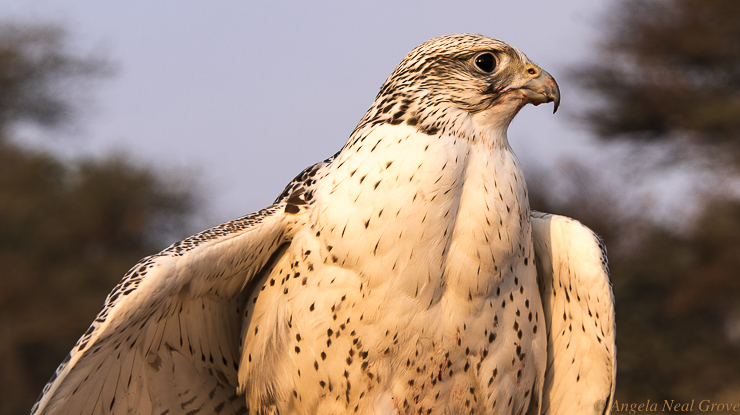
I am on falcon watch. It is sunrise in the Dubai desert and our breath is making small white puffs in the early chill. We have come to Al Maha on the Dubai Desert Conservation Reserve to see falcons speed through their paces and learn more about the ancient sport of falconry.
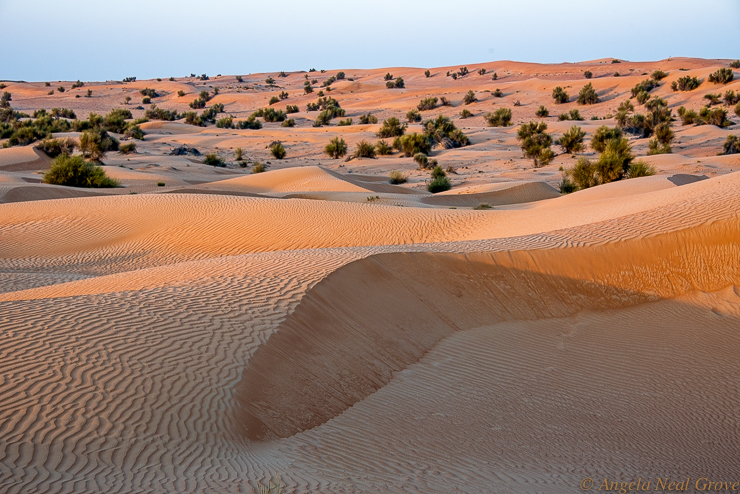
Falconry Is An Ancient Way of Life
Historians say the origins of falconry – the hunting of live quarry with a trained bird of prey – date back 10,000 years. It was a way of life for subsistence in the Mongolian Steppes, Mesapotania and Persia. In ancient Egypt Horus, the falcon god, was immortalized in statues, carving and used for decoration.
In Arabia falconry was the way to supplement the Bedu desert diet. In 2012 it was designated by UNESCO as a living human heritage element in eleven countries including the UAE.
I could not wait to see and find out more.
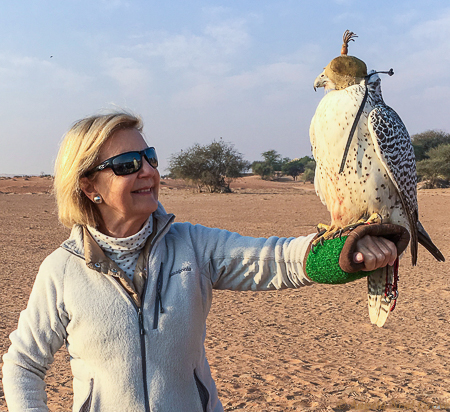
Precious Cargo
At Al Maha three falcons arrived in Land Rovers with handlers and some quail for rewards. Each bird wore a handmade soft leather hood decorated with a leather topknot. Hoods are essential, I learned, to keep the birds calm.
Handlers wore thick leather gauntlets to protect them from lethal beaks and talons.
Feathered Ferraris
The adventurous among us were able to don a protective perch and hold one of these magnificent creatures. I held a gyrfalcon the largest species of falcon. Not quite the fastest, though it clocks 130 mph when diving for prey. Peregrine falcons, the fastest creatures on the planet, can reach 242 mph in flight we were told. Clearly Ferraris of the bird world.
I am not sure what speeds were reached during our demonstration, but the birds dipped and swooped dramatically over our heads, sometimes quite close, as the lure was swung. Eventually they were re-hooded and rewarded with quail. Then we walked back acrosss the dunes to the lodge for our breakfast.
I still wanted to find out more.
Abu Dhabi Falcon Hospital
Two days later I was in Abu Dhabi headed for the Abu Dhabi Falcon Hospital – the finest in the world and state of the art. By that time I had discovered that a gyrfalcon can fetch as much as $250,000. The same as a no frills Bentley Mulsanne, reported an article on Falcons in Forbes Magazine.
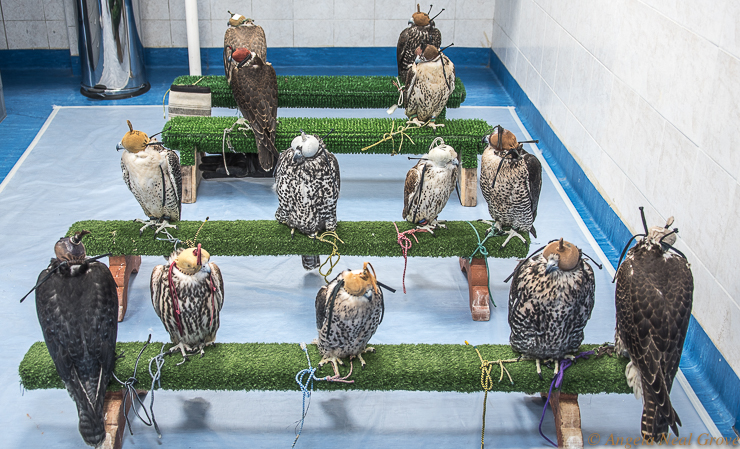
Protecting this kind of investment with regular checkups and tuning is essential. Besides these birds are an integral part of traditional Gulf culture and are given the same kind of care and love Westerners lavish on beloved cats and dogs.
Precious Patients
As I toured the hospital, which is open to the public, we were shown the waiting room where patients perched, rather subdued, waiting their turn. We also were shown a falcon passport – each bird must have a valid passport when not flying under its own power. They are also embedded with micro-chips.
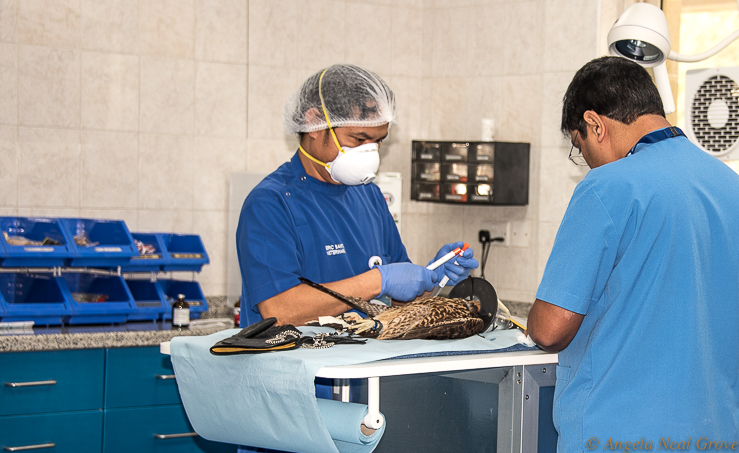
In the operating room one patient was having a routine procedure. Talons need to be kept clipped and if flight feathers are damaged they may need the equivalent of feather hair extensions. There is an ICU for more serious cases.
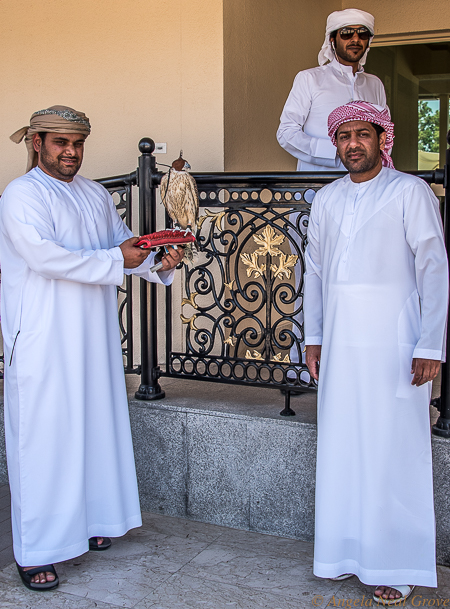
In Recovery, Good to Go…
Outside the hospital the courtyard was buzzing with new patients arriving and others in recovery and on the way home.
One cherished falcon had an escort of three. Hard to tell how it was feeling under its leather hood. It was soon whisked away in an air-conditioned Mercedes. Falcons in the UAE have a more luxurious lifestyle than the Khazak eagle trained by Aishlopan in The Eagle Huntress.
Four wheel drive cars and GPS are new sophisticated elements. However the birds provide an age-old link between Arabs and the desert.
These magnificent creatures with their phenomenal eyesight, endurance, power and incredible speeds earn the care they receive. As I discovered traditional falconry thrives today as it has for past 10,000 years and the birds continue to soar.